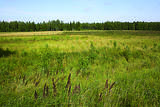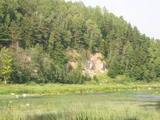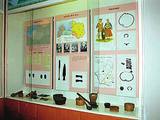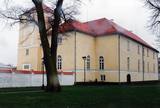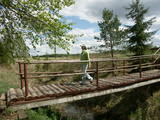| Нo | Название | Описание |
|---|---|---|
|
Izteiksmīgs zemesrags, kas klāts ar
dažāda lieluma laukakmeņiem.
|
||
|
Haapsalu was once loved by aristocrats who stayed here during summers, nowadays this town is very appealing to its visitors because of its essence - tiny streets, old wooden buildings and promenade. Worth mentioning are also town's SPAs which were one of the reasons why Haapsalu was so popular its earlier years. Interesting enough, the famous composer Tchaikovsky considered this place one of his favorite's for spending the holidays. |
||
|
В уютном трактире в центре Элвы Вас не только сытно накормят, но и порадуют дружелюбной атмосферой. В разнообразном меню свои любимые блюда смогут найти даже самые избирательные посетители, в том числе и веганы. Есть возможность арендовать помещения и заказать еду. В летний сезон также открыта летняя терраса. |
||
|
Дом отдыха Ugaraja Kotkapesa ‒ это уютное место, где хозяева предлагают гостям домашнюю еду, приготовленную по их выбору из выращенных в близлежащих хозяйствах продуктов. В доме отдыха есть большой зал и сауна, а окрестности подходят для интересных походов. |
||
|
Teirumnīku purvs ir latvijas lielākā iekšzemes mitrāja - dabas lieguma "Lubāna mitrājs" sastāvdaļa, kas meklējams dienvidaustrumos no Lubāna ezera. |
||
|
Находятся на правом берегу Даугавы, где речушка Карикстес впадает в Даугаву. Замок, от которого сегодня сохранились только остатки стены и фундамент, был построен в 1224 году. Замок был обжит до середины 17 века, когда во время Польско - шведский войны здание было разрушено. Прекрасный вид на развалины замка открывается с дороги (гравийной), которая простирается вниз по правому берегу долины Даугавы. |
||
|
Думельские озерные луга – место, окутанное преданиями и историями о
том, что здесь когда-то было озеро Видала (Божка), воды которого в 1838 г. ушли в
море. Интересно,
что на дне озера, после ухода вод, нашли древние сваи и остат-
ки кораблей.
|
||
|
Krodziņš "Rančo" atrodas Rīgas - Liepājas šosejas 136. kilometrā, un saviem apmeklētājiem piedāvā gardus ēdienus un omulīgu atmosfēru. Ēdienkartē iekļauti latviskie ēdieni, ir iespējams pasūtīt banketus. Latviešu virtuve: Skābu kāpostu zupa, skābeņu biezzupa, aukstā zupa, asinsdesa, pelēkie zirņi ar speķi, siļķe ar biezpienu un kartupeļiem, kartupeļu pankūkas, plānās pankūkas. |
||
|
Ja mērķis ir savākt pilnvērtīgu etnogrāfisko ciemu fotokolekciju, ir jāapskata Strazdi (no lietuviešu valodas strazdai tulkojumā nozīmē strazds), kas ir pavisam neliela apdzīvota vieta Balošas (Baluošas) ezera ziemeļu krastā. Strazdi pirmoreiz rakstos minēti 1783. g. un ciema nosaukums cēlies no kādas mežziņu dzimtas uzvārda. |
||
|
Vecauces ev. lut. baznīca ir valsts nozīmes arhitektūras piemineklis. Baznīca pirmo reizi uzcelta kā koka būve 1667. gadā, bet pēc zibens spēriena 1729. gadā tā nodega. Mūra baznīca celta 1744. gadā, savukārt 1866.gadā Mēdemu valdīšanas laikā baznīcu paplašināja līdz 500 sēdvietām, izgatavoja jaunu altāri, kanceli un uzstādīja Liepājas ērģeļmeistara Kārļa Hermaņa būvētas ērģeles. meklētājiem piedāvā doties interesantā, izklaidējošā un informatīvā ekskursijā pa baznīcu, apskatot ekspozīciju "Auce pirmās Latvijas brīvvalsts laikā" un baznīcas bibliotēku (Baznīcas grāmatas (pirmās Latvijas brīvvalsts laiks – 1918.-40.g., vācu laiks, padomju laiks un šodiena)). Baznīcā izveidotajā Mākslas telpā apskatei tiek piedāvātas vairākas unikālas ekspozīcijas: skolotājas Jadvigas Kupčes grāmatu un personīgo lietu ekspozīcija, kantātes “Dievs Tava zeme deg” vārdu autora Andreja Eglīša ekspozīcija, izcilā flamenko ģitārista Andreja Kārkliņa un režisora Kārļa Pamšes ekspozīcijas. |
||
|
One of the most beautiful areas along the Venta River and its tributary, the Šķērvelis River. The river valleys and gullies along them are quite deep, and dolomite and sandstone cliffs can be spotted here and there. There are also rapids on the river. The largest cliffs in Kurzeme – the Ātraiskalns and Gobdziņi cliffs – can be seen on the banks of the Venta. The Lēni Catholic Church is near the restricted area. There are no tourist elements in the restricted territory at this time. The Venta is a popular destination for water tourists, however, from Nīgrande to Kuldīga. |
||
|
Вилянский краеведческий музей. В музее есть возможность
познакомиться с историей и культурой края с давних времён до
наших дней. Экскурсии по городу.
Время работы: 8.00 – 12.00,13.00 – 17.00, Сб.,Воскр.: выходные |
||
|
Подтоплены и находятся в месте слияния Даугавы и Персе. Возводился в 1209 году для нужд Рижского епископства на месте бывшей деревянной крепости древних латышей. В XIV веке во дворе замка были построены деревянные здания, приспособленные для постоянного проживания. В XVI веке построили пристройки и возвели две круглые башни. В 1701 году кажущийся несокрушимый замок взорвало войско саксонцев. Рядом с руинами замка работает центр для посетителей, в котором можно выковать монету средневековья и взять напрокат лодку для прогулки по Даугаве. Стоит прогуляться по Кокнескому парку (создан в 1900 г.), где установлены шведские пушкиXVII века, надгробные памятники средневековья и восстановлен фонтан «Голова фавна», который в 20 - 30 годах располагался неподалеку от водопада Персе (сейчас под водой). |
||
|
This is the thickest and tallest common ivy in Latvia. It is in the park of the Zentene Estate, opposite the mansion (which is now a school).
|
||
|
Находится в Плявиняс, напротив улицы Калькю на берегу Даугавы, где из бревен и камней создана символическая часть плота, т.н. пленица. В окрестностях размещены информационные стенды с фотографиями, рассказывающие о тяжелом ежедневном труде Даугавских плотовщиков по преодолению участков реки с порогами. |
||
|
Замок возводился как военный стратегический объект, поэтому за время своего существования пережил разные власти и времена. Строение (впервые упомянуто в конце 13 века), невзирая на опустошительные войны, с небольшими изменениями сохранило свой основной объем и сущность замка Ордена, что является уникальным для Латвии случаем! Считается старейшим замком средневековья в Латвии. С 2001 года в здании располагается Вентспилсский музей - один из современнейших в Латвии. |
||
|
Участок железнодорожной линии с шириной колеи 750 мм, соединяющий Алуксне и Гулбене, является частью бывшей железнодорожной линии Стукмани – Валка. На сегодняшний момент это единственная функционирующая узкоколейная железная дорога с регулярным пассажирским сообщением. Узкоколейка функционирует каждый день. Станционное здание Алуксне, построенное в южной части Алуксне, открыли в 1903-м году. Общая протяженность линии, на которой находятся 10 станций и остановочных пунктов, составляет 33 км. Время в пути – полтора часа. Популярен ежегодный Праздник Банитиса, собирающий много гостей. |
||
|
Das größte im Baltikum. Marathonloipe von Tartu, Wand der künstlichen Felsen und Trasse der Radmarathon. Skimuseum. Auf der Tehvandi-Sprungschanze ist ein Aussischtsplatform eingerichtet. |
||
|
A small and forested territory with sulphurous springs, among which the most popular one is the Ellīte sulphur spring. It has sulphurous water with a low level of minerals, and the water supposedly has medicinal properties. The area around the stream is well-appointed, and a pathway leads to it. The stream is considered to be the source of the Iecava River. The restricted area is there to protect biotopes and protected plants which are in the area.
|
||
|
Парк усадьбы Ильзенберг отличается смешанной планировкой и сохранился в почти первозданном виде — таким, каким он был создан во второй половине XIX в. на живописном месте с выразительным рельефом, между озерами Апваласас и Ильгис. При восстановлении парка была сохранена его пространственная структура. Парк занимает 10 га и состоит из двух частей. Первая — это сравнительно правильная прямоугольная территория у дворца, ограниченная рядами сердцевидных лип и пейзажными группами местных и интродуцированных деревьев. Вторая часть представляет собой зеленые насаждения по типу естественного леса. Старый дуб из парка усадьбы Ильзенберг объявлен объектом природного наследия и находится под охраной государства. Охват ствола этого гиганта составляет 6,3 м, диаметр — 2 м, а высота — 30,5 м. |
||









